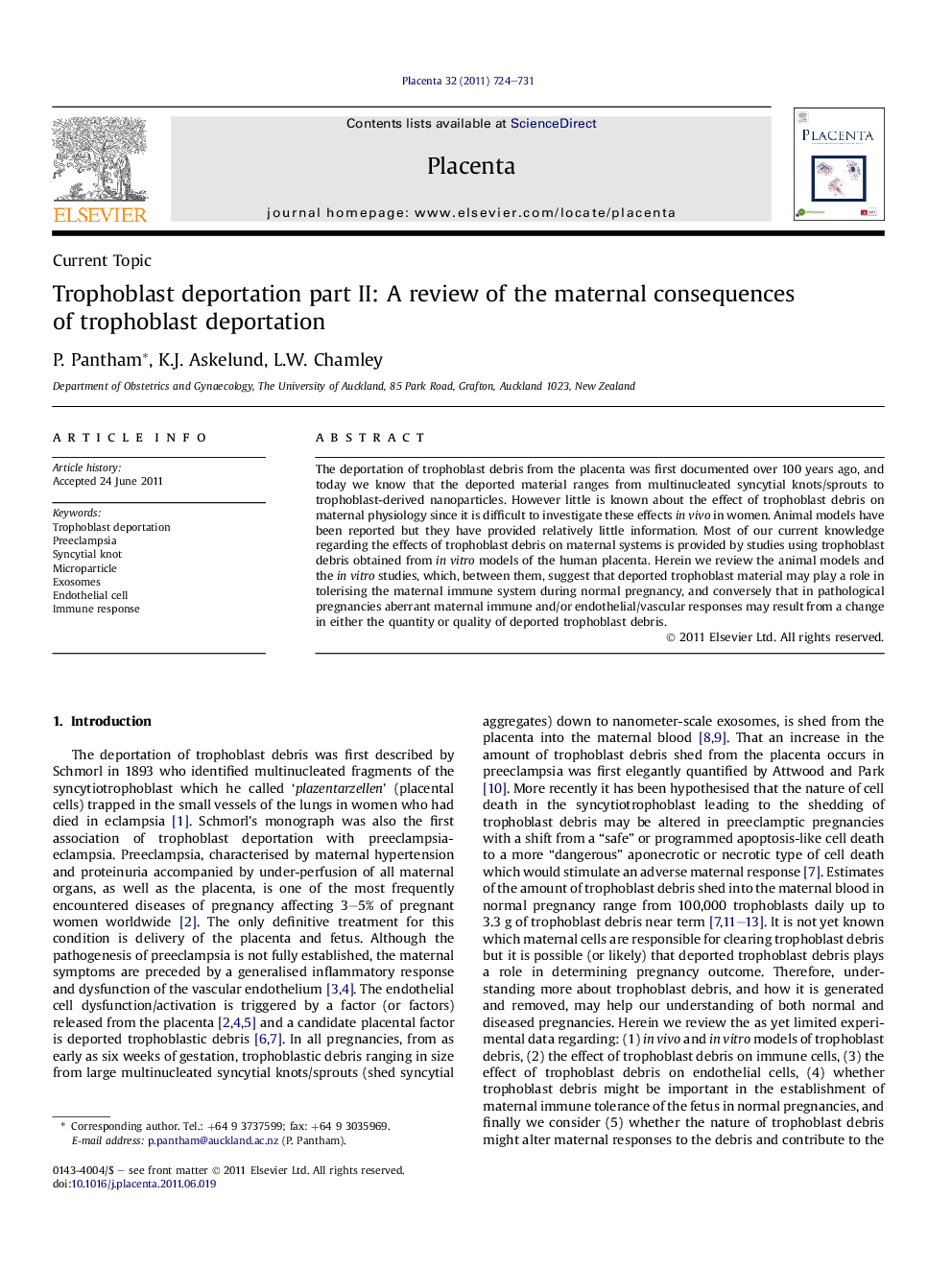| Article ID | Journal | Published Year | Pages | File Type |
|---|---|---|---|---|
| 2789353 | Placenta | 2011 | 8 Pages |
The deportation of trophoblast debris from the placenta was first documented over 100 years ago, and today we know that the deported material ranges from multinucleated syncytial knots/sprouts to trophoblast-derived nanoparticles. However little is known about the effect of trophoblast debris on maternal physiology since it is difficult to investigate these effects in vivo in women. Animal models have been reported but they have provided relatively little information. Most of our current knowledge regarding the effects of trophoblast debris on maternal systems is provided by studies using trophoblast debris obtained from in vitro models of the human placenta. Herein we review the animal models and the in vitro studies, which, between them, suggest that deported trophoblast material may play a role in tolerising the maternal immune system during normal pregnancy, and conversely that in pathological pregnancies aberrant maternal immune and/or endothelial/vascular responses may result from a change in either the quantity or quality of deported trophoblast debris.
